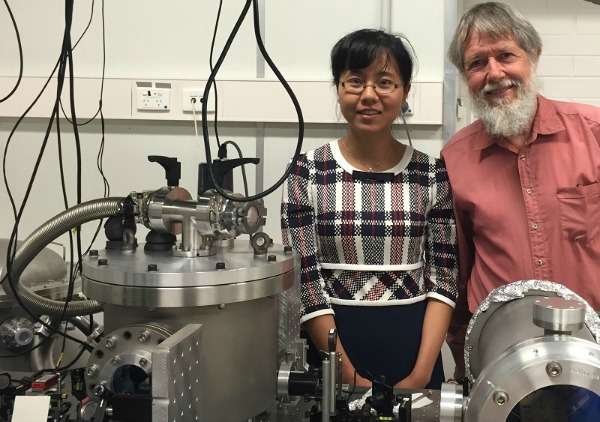Improving gravitational wave detectors using a cat flap

We've already found gravity waves through a detector that can sense movement which is around 100 trillion times less than the width of a human hair, so what's the next step? How about increasing that sensitivity by using a cat flap.
This is the latest project of UWA physicist Professor David Blair and his team who are developing a tiny mirror to substantially improve gravitational wave detection.
But in order to reduce this mirror's thermal vibrations they have suspended it like a cat flap.
The team was heavily involved in producing the Advanced Laser Interferometer Gravitational Wave Observatory (LIGO) that recently detected the first of these waves.
And they have wasted no time in developing a device to increase its sensitivity even further by increasing the bandwidth.
Everything about the Advanced LIGO depends on resonance, but unfortunately making the resonance as good as possible means that the number of detectable frequencies—the bandwidth—is severely narrowed.
"For example, we could detect signals at say 100Hz, but would hear nothing at 105Hz, which would be like hearing middle C but not being able to hear C sharp because the frequency is slightly different," Prof Blair says.
So the team came up with a vibrating mirror that works with light to produce a phenomenon called negative dispersion.

Dispersion is the process that splits white light into its component colours, each with a different frequency, when passed through a prism.
So negative dispersion is the process of combining many frequencies at the same resonance, which results in a much larger available bandwidth.
By using another phenomenon called radiation pressure—which is where light hitting an object applies a small amount of pressure to that object—light pushing against the tiny mirror creates negative dispersion within the mirror.
The result is that this tiny mirror, which will be less than a millimetre in size, can increase the sensitivity of the LIGO detector by around seven times.
Presently the detectors can only detect huge tsunami-like gravity waves but the new technology will make it possible to detect smaller ripples caused by violent cosmic events.
"This means that where we could detect a gravitational wave signal coming from one billion light years away, we can now detect the same signal coming from seven billion light years away," Prof Blair says.
Prof Blair estimates the cat flap mirror will take around five years to fully develop.
Provided by Science Network WA
This article first appeared on ScienceNetwork Western Australia a science news website based at Scitech.




















